| Listing 1 - 10 of 14 | << page >> |
Sort by
|
Book
ISBN: 9780714878126 071487812X Year: 2020 Publisher: London Phaidon Press Limited
Abstract | Keywords | Export | Availability | Bookmark
 Loading...
Loading...Choose an application
- Reference Manager
- EndNote
- RefWorks (Direct export to RefWorks)
This book takes its subtitle from Postmodernist icon Robert Venturi's spirited response to Mies van der Rohe's dictum that 'less is more'. One of the 20th century's most controversial styles, Postmodernism began in the 1970s, reached a fever pitch of eclectic non-conformity in the 1980s and 90s, and after nearly 40 years is now enjoying a newfound popularity. Postmodern Architecture showcases examples of the movement in a rainbow of hues and forms from around the globe.
72.036 --- 20ste eeuw (architectuur) --- Twintigste eeuw (architectuur) --- Postmodernisme (architectuur) --- Postmoderne architectuur --- Architecture postmoderne --- Postmodernisme --- Architecture --- architecture [object genre] --- Postmodern --- Architecture, Postmodern.
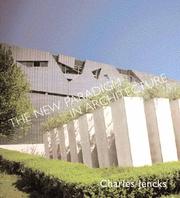
ISBN: 0300095120 9780300095128 0300095139 Year: 2002 Publisher: New Haven Yale University Press
Abstract | Keywords | Export | Availability | Bookmark
 Loading...
Loading...Choose an application
- Reference Manager
- EndNote
- RefWorks (Direct export to RefWorks)
Second printing 2008 the new paradigm in architecture tells the story of a movement that has changed the face of architecture over the last forty years. The book begins by surveying the counter culture of the 1960s, when Jane Jacobs and Robert Venturi called for a more complex urbanism and architecture. It concludes by showing how such demands began to be realized by the 1990s in a new architecture that is aided by computer design. Promoted by such architects as Frank Gehry, Daniel Libeskind, and Peter Eisenman, it has also been adopted by many schools and offices around the world. Charles Jencks traces the history of computer design which is built on the desire for an architecture that communicates with its users, one based on the heterogeneity of cities and global culture. This book, the first to explore the broad issue of Postmodernism, has fostered its growth in other fields such as philosophy and the arts. First written at the start of an architectural movement in the mid-1970s, it has been completely rewritten and with two new chapters, brings the history up to date
Architecture, Postmodern. --- Architecture postmoderne --- Jencks, Charles --- Postmoderne architectuur --- Postmodernisme (architectuur) --- Architecture --- 72.036 --- 72.01 --- Twintigste eeuw (architectuur) --- 20ste eeuw (architectuur) --- Architectuurtheorie --- Architectuur (theorie) --- Architecture postmoderne. --- Architecture, Postmodern --- Postmodernisme
Book
ISBN: 9781517902919 9781517902902 9781452956268 Year: 2018 Publisher: Minneapolis University of Minnesota
Abstract | Keywords | Export | Availability | Bookmark
 Loading...
Loading...Choose an application
- Reference Manager
- EndNote
- RefWorks (Direct export to RefWorks)
After World War II, West Germans and West Berliners found ways of communicating both their recent sufferings and aspirations for stable communities through buildings that fused the ruins of historicist structures with new constructions rooted in the modernism of the 1910s and 201820s. As Modernism as Memory illustrates, these postwar practices undergird the approaches later taken in influential structures created or renovated in Berlin following the fall of the Wall, including the Jewish Museum and the Reichstag, the New Museum and the Topography of Terror. While others have characterized contemporary Berlins museums and memorials as postmodern, Kathleen James-Chakraborty argues that these environments are examples of an architecture of modern memorythat is much older, more complex, and historically contingent. She reveals that churches and museums repaired and designed before 1989 in Dfcren, Hanover, Munich, Neviges, Pforzheim, Stuttgart, and Weil am Rhein contributed to a modernist precedent for the relationship between German identity and the past developed since then in the Ruhr region and in Berlin. Modernism as Memory demonstrates that how one remembers can be detached from what one remembers, contrasting ruins with recollections of modernism to commemorate German suffering, the Holocaust, and the industrial revolution, as well as new spaces for Islam in the country.
Architecture --- Architecture and society --- Collective memory --- ARCHITECTURE / History / Contemporary (1945-). --- ARCHITECTURE / Criticism. --- History --- 72.036 --- 72.025 --- Duitsland --- Berlijn --- Modernisme (architectuur) --- Modernistische architectuur --- Postmoderne architectuur --- Postmodernisme (architectuur) --- Restauratie (architectuur) --- architecture [discipline] --- Modernist --- anno 1900-1999 --- Germany: West
Book
ISBN: 0847800717 Year: 1977 Publisher: New York Rizzoli International Publications Inc.
Abstract | Keywords | Export | Availability | Bookmark
 Loading...
Loading...Choose an application
- Reference Manager
- EndNote
- RefWorks (Direct export to RefWorks)
72.036 --- 72.01 --- Jencks, Charles --- Charles A. Jencks --- architectuur --- architectuurtheorie --- twintigste eeuw --- postmodernisme --- Twintigste eeuw (architectuur) --- 20ste eeuw (architectuur) --- Architectuur (theorie) --- Architectuurtheorie --- Postmodernisme (architectuur) --- Postmoderne architectuur --- Architecture --- anno 1970-1979
Book
ISBN: 9061682770 Year: 1988 Publisher: Nijmegen SUN
Abstract | Keywords | Export | Availability | Bookmark
 Loading...
Loading...Choose an application
- Reference Manager
- EndNote
- RefWorks (Direct export to RefWorks)
Art --- anno 1900-1999 --- Architecture --- Aesthetics of art --- Architecture, Modern --- -Architecture, Postmodern --- 72.01 --- 72.036 --- 7.01 --- Kunst- en architectuurtheorie ; postmodernisme --- Postmodern architecture --- Postmodernism --- Modern architecture --- Architectuur (theorie) --- Architectuurtheorie --- Postmoderne architectuur --- Postmodernisme (architectuur) --- Twintigste eeuw (architectuur) --- 20ste eeuw (architectuur) --- Kunst ; theorie, filosofie, esthetica --- Architectuur ; theorie, filosofie, esthetica --- Architecture, Postmodern. --- architectural theory --- Architecture, Postmodern --- History --- Kunstesthetica --- Kunst --- Architectuur --- architectuurtheorie
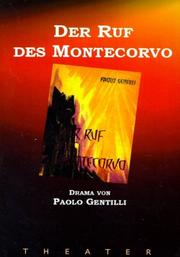
ISBN: 3791311360 9783791311364 3791311166 9783791311166 Year: 1991 Publisher: München Prestel
Abstract | Keywords | Export | Availability | Bookmark
 Loading...
Loading...Choose an application
- Reference Manager
- EndNote
- RefWorks (Direct export to RefWorks)
Leading architects present their views on deconstruction and new modernism.
Deconstructivism (Architecture). --- Architecture --- Architecture, Postmodern. --- Forecasting. --- Deconstructivism (Architecture) --- Architecture, Postmodern --- 72.036 --- Postmodern architecture --- Architecture, Deconstructivist --- Deconstructionism (Architecture) --- Deconstructivist architecture --- Forecasting --- 20ste eeuw (architectuur) --- Twintigste eeuw (architectuur) --- Postmoderne architectuur --- Postmodernisme (architectuur) --- Architecture, Modern --- Constructivism (Architecture) --- Deconstructivism --- Deconstructivism. --- Deconstructivist --- New Modernist --- Postmodernism
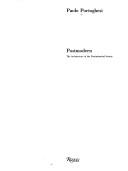
ISBN: 0847804720 Year: 1983 Publisher: New York Rizzoli
Abstract | Keywords | Export | Availability | Bookmark
 Loading...
Loading...Choose an application
- Reference Manager
- EndNote
- RefWorks (Direct export to RefWorks)
"The world-renowned Italian architect and critic Paolo Portoghesi explores the outstanding developments in Postmodernism worldwide during the past few years. The inspiration for his book was the Strada Novissima at the Venice Biennale in 1981, a streeet of structures designed for this occasion, a perfect symbol of Postmodernism. In these essays, all fully illustrated, Portoghesi offers a critical profile of the movement and explains why it constitutes a decive turnning point in the history of architecture. He reconstructs the theorertical intentions of postmodern architects, analyzes their built projects and outlines their prospects for the future. Included in his analysis are important projects by Philip Johnson, Cesar Pelli, Peter Eisenmann, Michael Graves, Thomas Beeby, Stanley Tigerman, Helmut Jahn, Ricardo Bofill, and Massimo Scolari, to name a few."
Architecture, Modern --- -Architecture, Postmodern --- Architectuur 20ste eeuw Postmodernisme --- 72.038 --- Postmodern architecture --- Postmodernism --- Modern architecture --- Architectuurgeschiedenis 1950 - 2000 --- Postmodern --- Architecture, Postmodern. --- Portoghesi, Paolo, --- Architectuur ; 20ste eeuw ; Postmodernisme --- Architectuurgeschiedenis ; 1950 - 2000 --- architecture [discipline] --- Architecture --- anno 1900-1999 --- anno 2000-2099 --- Architecture, Postmodern --- History --- 72.036 --- 20ste eeuw (architectuur) --- Twintigste eeuw (architectuur) --- Postmoderne architectuur --- Postmodernisme (architectuur)
Book
ISBN: 9781927071601 1927071607 9783959052283 3959052286 Year: 2020 Publisher: Leipzig : Montréal : Spector Books ; Canadian Centre for Architecture,
Abstract | Keywords | Export | Availability | Bookmark
 Loading...
Loading...Choose an application
- Reference Manager
- EndNote
- RefWorks (Direct export to RefWorks)
Architecture Itself and Other Postmodernist Myths' brings together an array of building fragments, drawings, models, and primary source documents, to present canonic projects from an unexpected and unfamiliar point of view. The exhibition challenges the typical narrative of the heroic architect by revealing a counter- reading of postmodern procedures. The purpose is simultaneously to deflate the postmodern mythologizing of the architect and inflate the importance of empirically describable architectural activity. In so doing, the exhibition will make original contributions both to a counter-historiography of the postmodern and to contemporary curatorial method. A broad selection of material evidence -- gathered from building sites, libraries, and archives -- supports accounts of architects? and architecture?s entanglements with bureaucracy, the art market, and academic and private institutions, as postmodernization challenged the discipline to redefine its modes of practice and reconsider the very idea of architecture itself. Postmodern architecture was characterized by four dominant beliefs: that architecture was distinct from the materiality of things; that history had an operative role to play in the present; that the emergence of a culture dominated by images enabled architects to equate drawing with authorship; and that architecture could secure its status among the arts by staking a claim to the exhibition space. While each strand of this belief system had deep historical roots, the expanding reach of American corporations played a crucial role in transforming these ideas into what was then termed the first global style. Architecture Itself and Other Postmodernist Myths features a series of fragments salvaged from canonic buildings of the late twentieth century together with archival materials from the CCA and other museum collections.
Architecture, Postmodern --- Postmodern architecture --- Architecture, Modern --- Postmodernism --- Exhibitions --- 72.036 --- 72.036 Moderne bouwkunst. Architectuur van de 20e eeuw --- Moderne bouwkunst. Architectuur van de 20e eeuw --- Architecture postmoderne --- 72.01 --- Architectuur (theorie) --- 20ste eeuw (architectuur) --- Twintigste eeuw (architectuur) --- Modernisme (architectuur) --- Postmoderne architectuur --- Postmodernisme (architectuur)
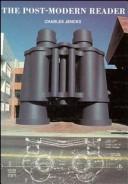
ISBN: 1854901079 031207896X 9781854901071 Year: 1992 Publisher: London Academy Editions
Abstract | Keywords | Export | Availability | Bookmark
 Loading...
Loading...Choose an application
- Reference Manager
- EndNote
- RefWorks (Direct export to RefWorks)
History --- art history --- Modernist --- Postmodern --- feminism --- art [fine art] --- Art styles --- Iconography --- Art --- anno 1900-1999 --- anno 2000-2099 --- anno 1980-1989 --- anno 1970-1979 --- History of civilization --- Philosophy and psychology of culture --- postmodernisme (kunst) --- Postmodernism --- 72.01 --- 72.036 --- Jencks, Charles --- Architectuur (theorie) --- Architectuurtheorie --- Postmodernisme (architectuur) --- Postmoderne architectuur --- Twintigste eeuw (architectuur) --- 20ste eeuw (architectuur) --- Postmodernism. --- Post-modernism --- Postmodernism (Philosophy) --- Arts, Modern --- Avant-garde (Aesthetics) --- Modernism (Art) --- Philosophy, Modern --- Post-postmodernism --- art [discipline]
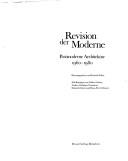
ISBN: 3791306642 9783791306643 Year: 1984 Publisher: München Prestel-Verlag
Abstract | Keywords | Export | Availability | Bookmark
 Loading...
Loading...Choose an application
- Reference Manager
- EndNote
- RefWorks (Direct export to RefWorks)
architecture [discipline] --- Architecture --- anno 1900-1999 --- anno 1970-1979 --- anno 1960-1969 --- Architecture, Postmodern --- Designs and plans --- Exhibitions --- -72.036 --- 72.036 --- Architectuur ; 20ste eeuw ; 1960-1980 ; Postmodernisme --- Tentoonstellingscatalogi ; D.A.M. Deutschen Architektur-Museum Frankfurt am Main --- 72.038 --- (069) --- Postmodern architecture --- Architecture, Modern --- Postmodernism --- -Exhibitions --- Postmoderne architectuur --- Postmodernisme (architectuur) --- Twintigste eeuw (architectuur) --- 20ste eeuw (architectuur) --- Architectuurgeschiedenis ; 1950 - 2000 --- (Musea. Collecties) --- #A0201A --- Exhibitions. --- Designs and plans&delete& --- CDL --- Architecture, Postmodern - Designs and plans - Exhibitions --- Postmodern
| Listing 1 - 10 of 14 | << page >> |
Sort by
|

 Search
Search Feedback
Feedback About UniCat
About UniCat  Help
Help News
News